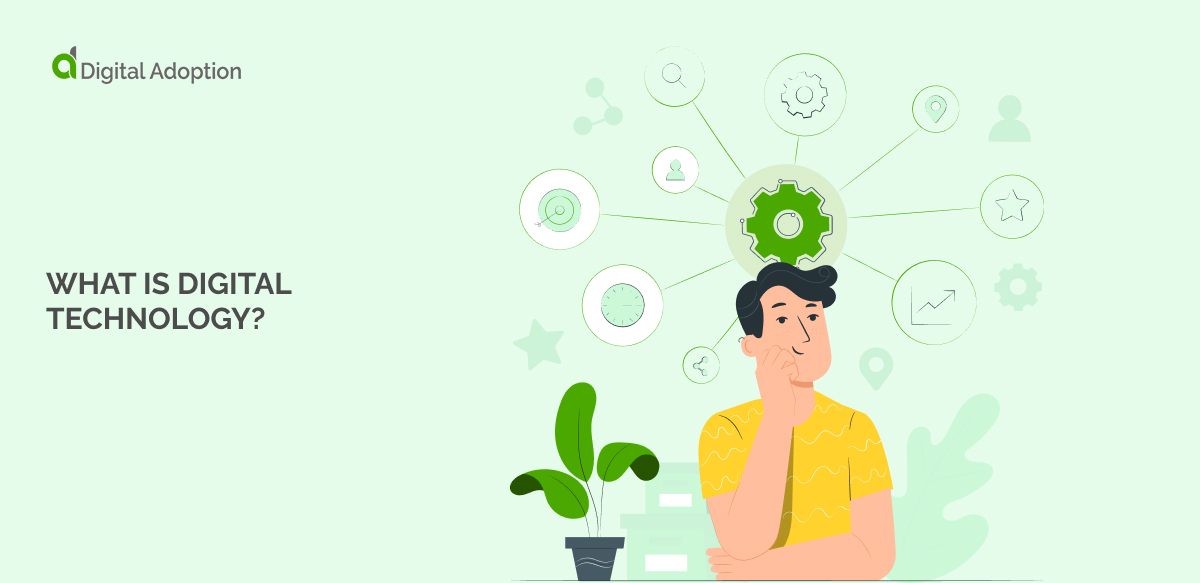There are so many forms of digital technology available today that it can be challenging to choose the one that is best for your business. Statista highlights the demand for digital or computerized devices as they predict global IT spending to increase to 4.66 trillion USD in 2023.
It’s easy to become overwhelmed by the sheer number of options available, especially if your organization is undergoing a digital transformation. Ensuring you have the right technology for your organization will help ensure your business is resilient, efficient, and cost-effective.
Digital adoption solutions (DAS) are a great resource for organizations looking to adjust their technology stack or implement new digital systems. They provide comprehensive guidance to help you choose the best technology for your business, emphasizing simplifying and streamlining processes.
To help you avoid wasting resources and choose the right technologies, we created this handy guide to help you navigate the complex world of digital technology for business.
This article will cover the following:
- What is digital technology?
- The different types of digital technology
- Why is digital technology important for business?
- What are the benefits of using digital technology?
- What are the challenges of digital technology?
- The future of digital technology
Let’s begin with a definition.
What is Digital Technology?
Digital technology means electronic tools, devices, systems, and resources organizations utilize as they process or store data and complete many other functions, increasing employee productivity and efficiency. Examples include digital cameras, personal computers, and all devices that utilize increasingly fast data transmission speeds and that store or process data using digital signals.
One example of technologies businesses use to utilize tools is cloud platforms, such as Microsoft 365 or Google Docs, that users can utilize on mobile phones. The reason for using digital technology is that it speeds up processes, allowing staff to focus on higher-level functions that technology cannot handle.
Now we have a definition of digital technology, let’s look at the different types of technology to deepen our understanding.
The Different Types of Digital Technology
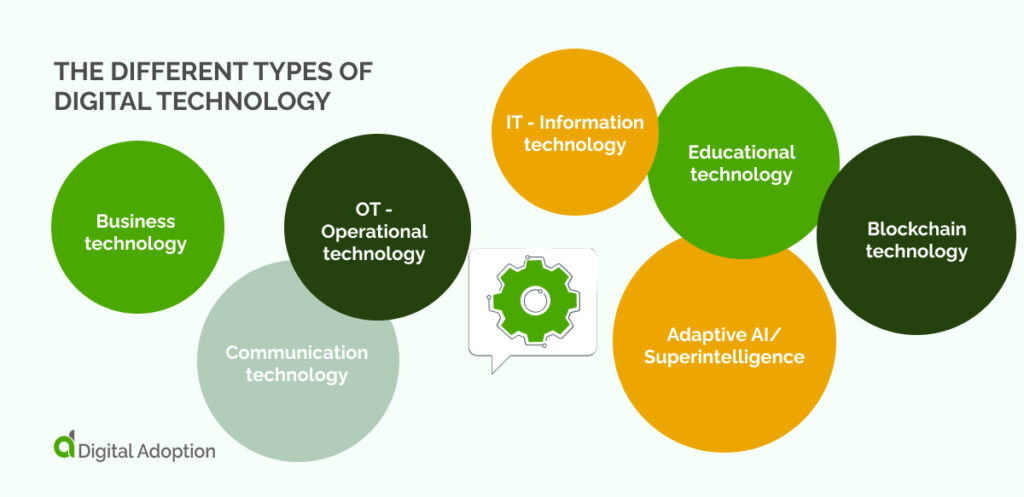
It’s helpful to be aware of the different types of digital technology available today to ensure you have the best tool for the job. There are over thirty types of digital technology, but we have curated a list of the technologies most relevant to business in priority order starting with business technology.
- Business technology: Businesses can elevate their operations through cutting-edge technology and science. Business Technology includes information technology, digital marketing, data management, and E-commerce tech.
- IT – Information technology: By leveraging IT – Information Technology – comprised of both hardware and software, in addition to telecommunications, businesses can store, send and retrieve data effortlessly.
- Communication technology: As an amalgamation of information and communication, Communication Technology (CT) involves digital communication networks for users and devices. Virtual assistants, social media platforms, Wi-Fi networks, and Bluetooth are examples of CT.
- OT – Operational technology: Operational Technology is a powerful combination of hardware and software that enables companies to secure their industrial networks.
- Adaptive AI/ Superintelligence: Superintelligence uses artificial intelligence and computer systems to expand and upgrade human life. AI-based examples of digital technology include chatbots, virtual agents, and self-driving cars.
- Educational technology: EdTech, or educational technology, has revolutionized how students learn by offering breakthroughs such as computer-based instruction, interactive learning tools, audio-visual systems, and online resources.
- Blockchain technology: Blockchain offers a secure, web-based financial system with encrypted data. Initially designed to manage digital assets, its applications now extend far beyond that; from online stock exchanges to social media platforms, this tech is quickly becoming an essential tool for businesses.
Consider this list in relation to your business tech stack and whether you need to fill a gap by investing in new technologies to promote innovation or growth.
Now we have explored the different types of technology, let’s look at why it is vital for business.
Why is Digital Technology Important for Business?
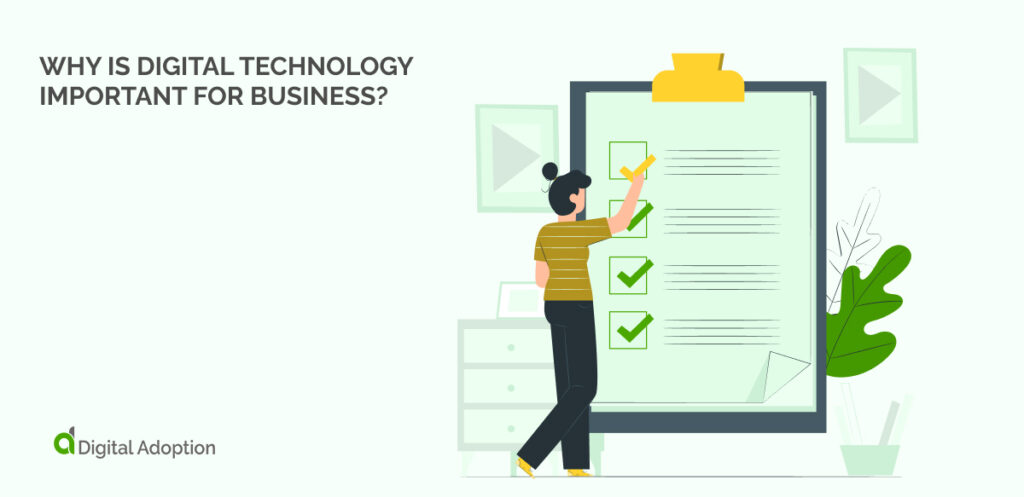
Over the past few decades, businesses have increasingly depended on technology. From the small corner shop using a chip and PIN reader to large enterprises rolling out DAPs to assist with complex systems of super apps, technology is the key to success. It helps businesses streamline operations, boost productivity, and improve customer experience.
By leveraging technology, businesses can gain a competitive edge in their industry and become more successful. Technology allows companies to stay ahead of the curve by providing better products or services at increasingly lower costs.
Tech also helps organizations respond quickly to customer needs, which is essential for long-term success. With so many advantages available, it’s no wonder why more and more business owners are investing in new technologies daily.
Since we now understand why technology is essential for business, let’s explore its benefits.
What Are The Benefits of Using Digital Technology?
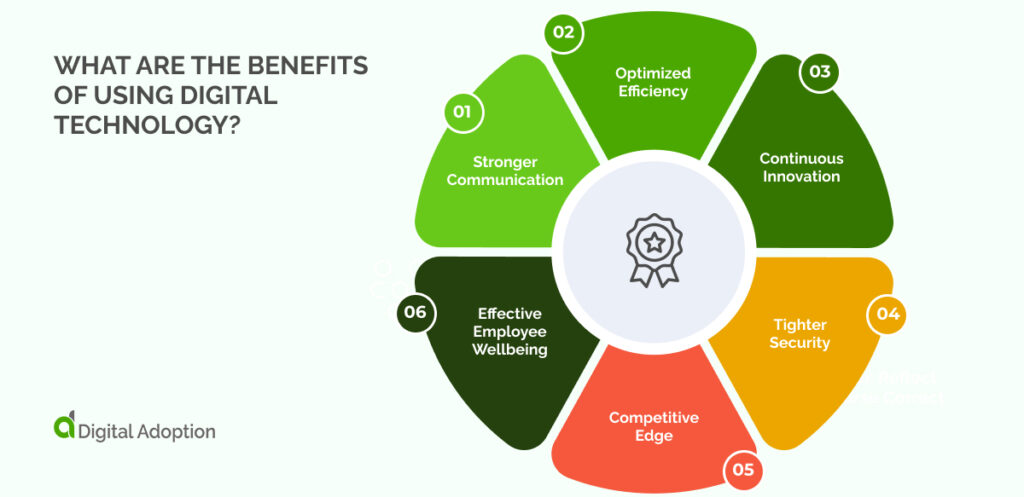
Since every business depends on technology today, it may seem unnecessary to cover the benefits. However, considering these benefits will help you know why you use each piece of tech to optimize its use and plan for future services as technology progresses. The first benefit we will look at is communication.
Stronger Communication
Technological advances can revolutionize how you interact with people worldwide, whether team members, clients, investors, or potential customers. With digital tools like Skype and Zoom for virtual meetings across great distances and Slack or Asana for internal communications within your organization, communication has never been simpler or more efficient.
Whether your team is hybrid, office-based, or remote, communication tools will assist you with tracking projects, getting the details of tasks right, and ensuring timely deadlines. Remember email newsletters, social media accounts, and other resources to keep everyone connected.
Optimized Efficiency
Technology has the potential to enhance systems, products, and services efficiency. From keeping track of processes and data flow to managing contact lists and employee records, technology can streamline operations while effectively decreasing costs and reducing waste – a win-win for any business. With streamlined processes, companies are in a better position for rapid growth.
Technology has undeniably enabled businesses to be more productive and cost-efficient without trading off quality. Manual tasks that staff previously completed manually can now be achieved through software programs, resulting in a significant reduction in labor costs while allowing staff members to focus on the areas where they are most needed.
Continuous Innovation
Innovation thrives in an innovative culture filled with a range of staff with diverse experiences that feel comfortable being creative thinkers to overcome problems. You can facilitate these three conditions by technology in the following ways:
- Innovative culture: Offer staff a stipend for technologies that allow them to engage in side projects to encourage innovation and
- Diverse teams: Use AI to hide personal information about nationality or race to ensure less bias and recruit more diverse talent pools.
- Creative thinking: Employ automation technologies to complete repetitive tasks, allowing staff to focus on more stimulating, creative activities.
Tighter Security
With cybercrime and data breaches on the rise, strong security is an absolute requirement for any organization. Most businesses store their assets either in the cloud or endpoints, so having stringent measures to protect their information and that of their customers has become essential.
Competitive Edge
Businesses must ensure profits steadily increase, and decreases in revenue means the competition will be taking those profits. Technology has become the edge that every company uses to get one step ahead of their peers, so utilize tech to ensure the sustainability of your business.
Automated metrics can track your organization’s performance, which you can use to spearhead a new strategy to outcompete your peers. AI can also predict future market trends to allow you to prepare in advance to optimize your use of emerging tech trends.
Effective Employee Wellbeing
Technology supporting staff well-being is vital to employee retention, productivity, and efficiency and will help employees adapt to digital transformation in the long term. With modern technology, we can access personalized health and wellness solutions. If an employee is under stress, a meditation app can help them. Activity trackers will be ideal if they want to increase fitness levels.
What Are The Top Three Challenges of Digital Technology Adoption?
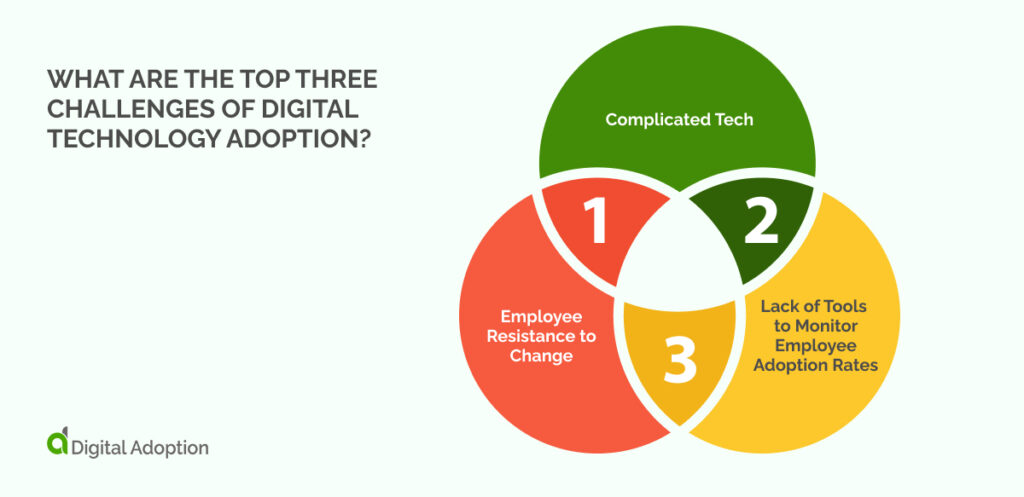
There are three top challenges to adopting digital technology, beginning with employee resistance to change.
Challenge 1: Employee Resistance to Change
Despite change being the only constant in professional life, it’s no surprise that we resist it. But securing all parties’ approval is essential and should not be overlooked. Prioritize employees who are likely the largest cohort of users – if they’re willing to use the new company tool, digital adoption will see exponential growth.
Solution: Communicate a transparent change management plan
Create a change management plan that outlines the rationale for implementing changes, how employees will be involved in and support the transition process, as well as steps they can take to ensure the successful adoption of digital tools. Include goals for the team and link them with organizational or business objectives so that everyone understands digital adoption as a collective endeavor, resulting in advantages for every party involved.
Challenge 2: Complicated Tech
Embracing a new digital technology or complex software can be intimidating, mainly if your team has been familiar with completing tasks a certain way for years. To make the adoption process more straightforward, how can you help them transition smoothly?
Solution: Use a DAP (digital adoption platform) tailored to individual needs
At the very outset, ensure your team’s trust in their DAP (digital adoption platform) by providing precise and comprehensive step-by-step guidance. Doing so makes them feel confident, knowing they are on the right track as they become familiar with your software.
Challenge 3: Lack of Tools to Monitor Employee Adoption Rates
To ensure that digital adoption is successful, tracking usage metrics and evaluating how employees engage with new tools is essential to technology adoption success.
Accurately gauging and comprehending how employees utilize your software is the initial step to analyzing its ROI. With these metrics in hand, it’s easier to detect any areas that need improvement (e.g., when users are getting stuck or skipping over relevant guidance). Additionally, through these insights, you’ll be able to pinpoint which features have been producing successful outcomes so you can highlight them for improved experience and engagement.
Solution: Utilize tools to track and measure the adoption of new technologies
Use the correct metrics to discern how employees use your direction and determine ROI. Uncover chances to enhance wherever people become stuck, give up, or miss out on the required aid.
Evaluating your employees’ habits and tendencies is an excellent way to decide if you have succeeded in conquering digital adoption troubles. Stonly, a specialized knowledge-based software with detailed usage analytics, has made the job much easier for you. With its help, it’s simpler than ever to track how your staff members use technology and determine whether they have fully adopted it.
Now that we have looked at the top three challenges of digital technology adoption, we must consider what aspects of technology we will need to react to in the future.
The Future Of Digital Technology
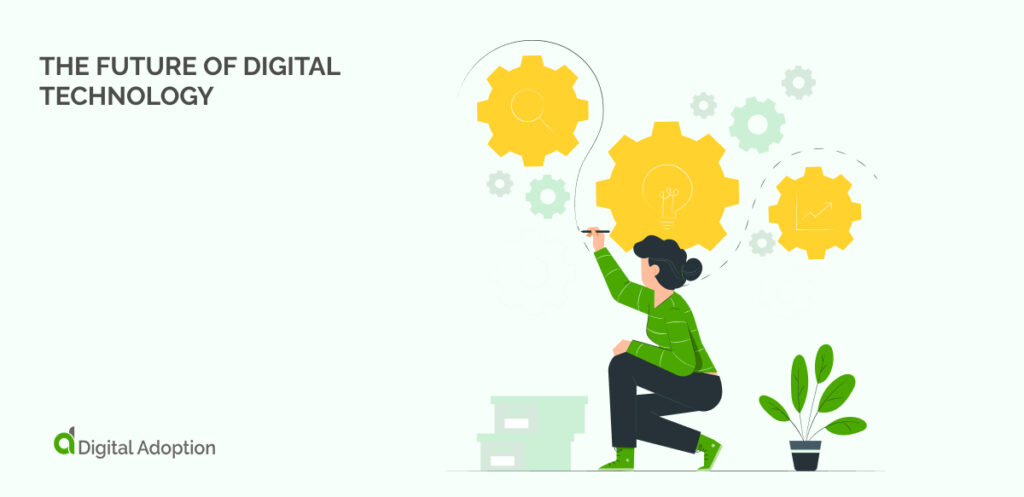
The nature of technology is that it is continuously evolving, and companies must embrace change to ensure they build operational resilience for the future. The best way to achieve this is to constantly re-evaluate your processes and operations and consider how to optimize efficiency while viewing vendors to consider which emerging technologies will fulfill your changing needs.
One of the likely technologies to emerge over the coming years is neuromorphic computing.
Neuromorphic Computing
Neuromorphic computing systems make it easier to develop new products. AI systems can learn about the natural world and react quickly and correctly. Examples of what they can do include recognizing patterns, detecting events, and learning from small amounts of data. We will soon see many products made with this technology.
Human-centered AI
HCAI (Human-Centered Artificial Intelligence) means learning new knowledge, making decisions, or having new experiences. HCAI can also be called “augmented intelligence,” “centaur intelligence,” or “human in the loop.”
Even if a machine works by itself, it still needs people to ensure it operates ethically. HCAI helps vendors stay safe with AI and use devices ethically and responsibly while maintaining the human touch and common sense.
Self-led Learning
Self-supervised models allow AI to deduce connections between different pieces of data, like which scenarios typically occur before or after another and what words usually go together. While self-supervised learning is only recently emerging from academia and a few businesses practice it in the Artificial Intelligence space, some companies specializing in NLP (natural language processing) & computer vision products have included it on their roadmap.
Reach New Heights With Digital Technology

Digital technology is undoubtedly the wave of the future that no business can ignore for much longer. It brings many benefits that can make life and work more efficient and enjoyable.
The possibilities are endless, with the potential to improve customer engagement, automate tasks, increase productivity, reduce costs and bring brand recognition. Businesses must be willing to invest in technology training and infrastructure upgrades to harness all these advantages.
By taking risks with digital technology, companies can significantly improve their competitive edge in the marketplace and accelerate their growth. It’s time for businesses to leap forward into the future: and reach new heights with digital technology.

 FACT CHECKED
FACT CHECKED